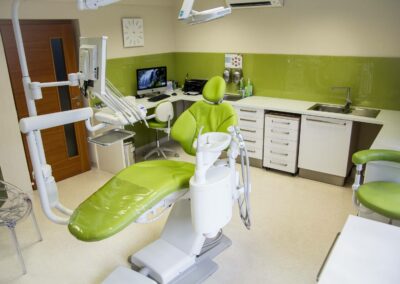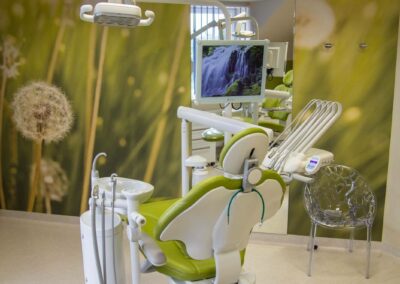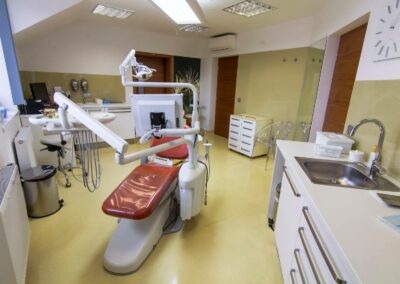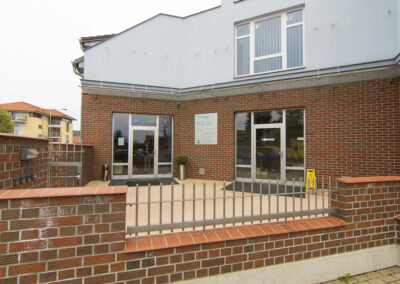Dental implants
Modern times require modern solutions, and dental implants undoubtedly conform to this classification. Losing a tooth is a very unpleasant event for everyone and it is not easy to deal with it. When replacing a tooth, we always prefer a fixed solution over a removable one. We are primarily concerned with your comfort, so that the new dental restoration is completely natural for you.
So we have two options to choose from. Replace a lost tooth with a dental bridge or dental implant.
In order to make a dental bridge, there must be at least one tooth on each side of the gap, which the doctor will reduce to stumps. In other words, in order to replace one tooth, it is necessary to irreversibly modify even perfectly healthy adjacent teeth. You probably feel that this solution is not the right one these days.
The current trend is dental implants. They allow us to replace a missing tooth without interfering with the adjacent teeth in any way.
What are dental implants?
The term “dental implant” is commonly used for a complete tooth replacement including a crown, but this is somewhat misleading. A dental implant is just a titanium screw (fixture) that is inserted into the bone to serve as an artificial tooth root. Its design and surface treatment are specially designed to create a high-quality connection with the bone, thus ensuring good stability for the dental replacement. The part protruding above the gum is then attached to the dental implant. It is called an abutment, which allows the dentist to make a crown replacement. These restorations are referred to as cemented.
Recently, screw-retained crowns for dental implants have become more popular. The difference is that the already finished dental crown, including the abutment, is fixed into the implant, and the replacement of the missing tooth becomes much easier and faster.
How is treatment performed using dental implants?
Before each implantation, the dentist performs a careful examination to assess whether suitable conditions for implantation are ensured. The examination includes 3D imaging using CBCT, which gives the doctor exact information about the situation in the given area. The dentist then prepares a treatment plan and price calculation for the patient.
The procedure itself is painless under local anaesthesia. The doctor will use calibrated instruments to make a short incision, expose the necessary bone, and create a hole for the dental implant. After the implant has been carefully inserted, the wound is closed with a suture and everything is left to heal.
In the case of simple implantation, it is a relatively quick and painless procedure without significant post-operative complications.
After healing into the bone, the implant is exposed by the doctor and a healing abutment which protrudes above the gum is placed on top of the implant. The healing abutment gradually shapes the gum around the implant so that the resulting dental crown looks completely natural.
After that, impressions are made, on the basis of which the dental crown is fabricated in the dental lab and, in the case of a screw-retained restoration, it is attached to the implant using a fixation screw. The hole in the dental crown is closed with a small white filling and you can use the new tooth again to eat and speak without any limitations.
Care for dental implants
Dental implants provide long-term, high-quality replacement of missing teeth, but they must be properly cared for. Compared to natural teeth, implants have only a very limited ability to withstand external influences. The most common cause of implant loss is inflammation, which spreads over its surface and disrupts the connection between the implant and the bone. It is referred to as peri-implantitis and is thus similar to inflammation occurring in natural teeth. With implants, however, the entire process takes place significantly faster, which is why regular check-ups and dental hygiene visits are an essential part of quality care for dental implants.
Dental medical team
Assoc. Prof. Eva Gojišová, MD
chief doctor – dentistry
MUDr. Magdalena Koťová, Ph.D.
chief doctor – orthodontics
MUDr. Tomáš Hlaďo
specialist doctor – pediatric dentistry
MDDr. Petr Švácha
Dentist
MDDr. Martin Linka
specialist doctor – orthodontics
Contractual health insurance companies



















